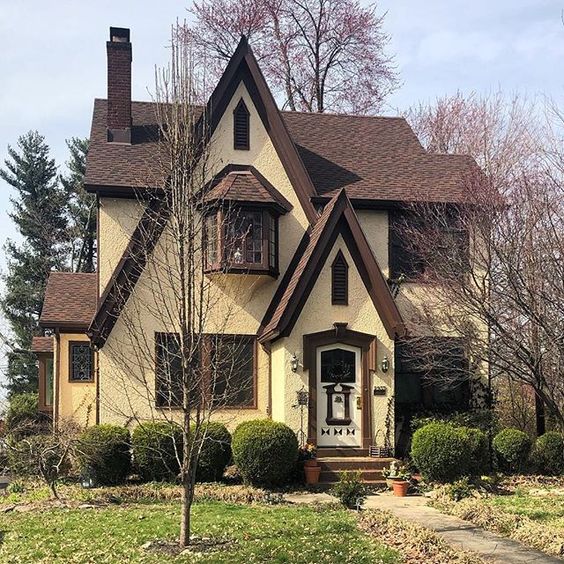#16547. Cozy Tudor house with an expressive American-style facade

Before us stands a striking example of Tudor architectural style with notable American influences. This charming residential house features characteristic stylistic elements that immediately catch the eye. The facade is finished in a light beige shade with impressive dark brown wooden elements, creating an expressive contrast.
Particularly noteworthy are the steep sloped roofs with several intersecting gables – a classic element of Tudor architecture. The asymmetrical composition gives the building dynamism and picturesqueness. The tall brick chimney serves not only as a functional element but also as an important architectural feature, emphasizing the vertical lines.
The facade is adorned with decorative wooden beams forming a geometric pattern characteristic of the Tudor style. Windows with small mullions and a bay window on the second floor add volume and depth to the facade. The entrance area is decorated with a small porch featuring an arched opening and a white door that effectively contrasts with the overall color scheme.
The landscape design of the plot harmoniously complements the architecture – neatly trimmed bushes, young trees, and a soft foreground of lawn create a cozy atmosphere. Flowering spring trees in the background add a romantic mood to the entire composition.
When designing the facade of your own home in a similar style, it's important to pay attention to roof proportions, quality of finishing materials, and a well-thought-out color combination. Contrasting wooden elements, asymmetrical composition, and decorative details will help create an expressive house image with individual character. Modern technologies allow the use of practical materials that imitate historical finishes while maintaining the aesthetics of the Tudor style.